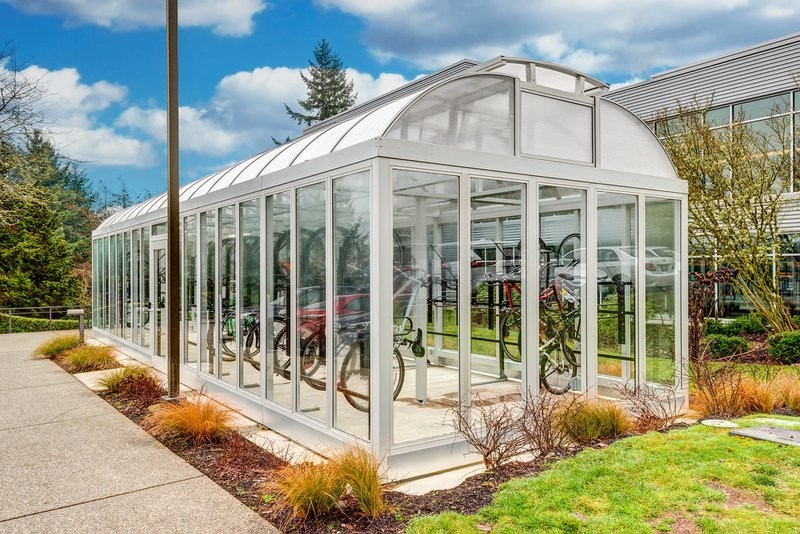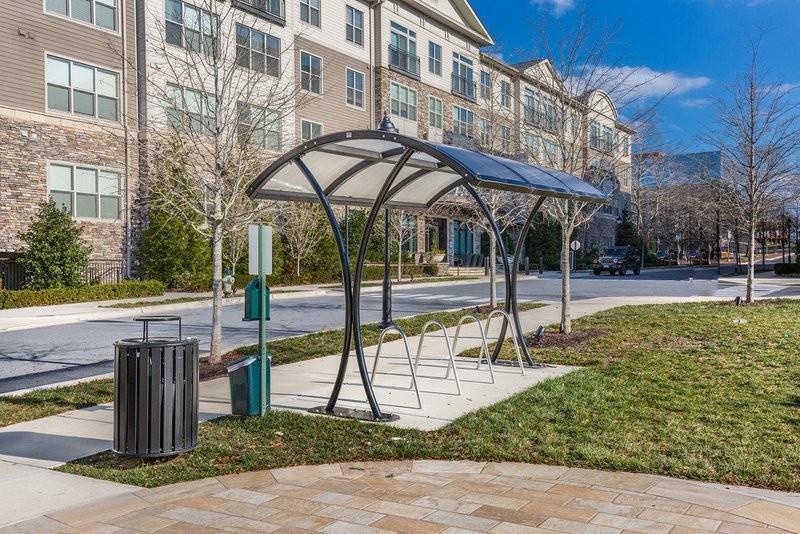Secure & Stylish: The Best Bike Shelters for Universities & Workplaces
Bike shelters have evolved from simple utilitarian structures to architectural features that help define a facility’s character and commitment to sustainability. As cities and campuses grow increasingly bike-friendly, organizations are turning to secure bike shelters not only to support eco-conscious transportation but also to create safer, more attractive environments for riders.
Today, it’s not just about providing a dry spot for bikes. The emphasis is on thoughtful design—solutions that balance aesthetics, durability, and functionality. With a surge in demand for alternative transportation and the growing need for secure storage, modern bike shelters must do more than just protect bikes from the weather—they need to protect against theft, integrate with the landscape, and reflect an organization’s broader mission and identity.
Why Secure Bike Shelters Matter
The importance of security in bike shelter design cannot be overstated. A high-quality, well-placed shelter gives cyclists the peace of mind they need to confidently choose biking over driving. Without secure storage, even the most bike-friendly locations risk underutilization of their infrastructure. Theft, vandalism, and exposure to weather are still major deterrents for riders—and solving those concerns starts with the shelter itself.
That’s where secure bike shelters make their mark. Designed with tamper-resistant materials like heavy-duty aluminum and tempered glass or polycarbonate panels, these shelters are built to withstand more than just the elements. Enclosed models feature full-panel walls and protected access points, creating an environment that prioritizes both safety and usability.
Trends in Bicycle Shelter Designs
Architecture and sustainability have always shared a close relationship—and bike shelters are no exception. Today’s trends in bicycle shelter designs reflect a desire for modularity, custom finishes, integrated technology, and seamless aesthetics. Planners are looking for ways to match shelters with surrounding architecture, whether through rooflines, color palettes, or coordinated accessories.
Customization is a key trend, with organizations opting for finishes and features that reflect their brand or mission. Transparent panels for visibility and security, solar-powered lighting for nighttime use, and even mobile-device charging ports are becoming standard offerings. These design elements transform a simple shelter into a smart, multi-functional amenity that enhances both the user experience and the visual appeal of the space.

Photo by Handi-Hut
The Tangible Benefits of Installing Bike Shelters
There’s no shortage of benefits to installing bike shelters—especially secure ones. From a logistical standpoint, they help reduce clutter, increase property value, and protect expensive bikes from rain, snow, and sun. But the bigger picture is where the impact really comes into play.
Secure bike shelters are a powerful tool for advancing environmental goals. By making biking a more viable option, they help reduce car traffic, lower emissions, and promote healthier habits among students, employees, and residents. For organizations focused on ESG reporting, sustainability certifications, or green campus initiatives, investing in bike infrastructure offers a visible, measurable win.
On the operational side, shelters contribute to better site planning and organization. They define clear, centralized areas for bike parking, which reduces sidewalk congestion and improves accessibility for pedestrians and vehicles alike. When implemented strategically, they can even reduce liability and maintenance costs.
The Role of Secure Bike Parking in the Workplace
Organizations of all types are taking a closer look at how infrastructure influences workplace culture—and bike parking is no exception. The decision to install secure bike parking in the workplace sends a strong signal that active commuting is not only accepted, but encouraged.
More employees are turning to cycling as a primary mode of transportation, especially in urban centers and regions with robust bike lane networks. Employers who respond to this trend by providing safe, enclosed bike storage create a more inclusive and health-conscious work environment. That, in turn, can boost recruitment, retention, and employee satisfaction.
Enclosed shelters offer protection from both theft and weather, but they also reflect an organization’s attention to user needs. With proper planning, these shelters can be strategically located near entrances, connected to covered walkways, or integrated with transit stops for a smoother commute.
Meeting the Needs of Educational Institutions
Secure bike shelters for educational institutions face a unique set of requirements. College and university campuses often span large geographic areas, serve thousands of daily riders, and include historic or highly stylized architecture that limits design options.
In these environments, secure bike shelters must check a lot of boxes: durability, capacity, accessibility, and design cohesion. Shelters need to accommodate both long-term storage for resident students and quick-stop parking for commuter traffic. And they need to do so in a way that feels safe and intuitive to the user.
Modular systems allow for flexibility in layout and capacity, while transparent materials and integrated lighting improve visibility and reduce unwanted activity. When paired with amenities like leaning rails, benches, or nearby smoking shelters, these installations become complete micro-mobility hubs that enhance campus life.
Adapting Bike Infrastructure Across Public and Private Spaces
Bike infrastructure isn’t one-size-fits-all. Whether it’s a municipal transit center, a hospital campus, or a private business park, each location has its own spatial limitations, architectural style, and user demographics. The beauty of modular bike shelters lies in their adaptability.
For example, a transit agency may want to co-locate bike shelters with transit shelters for seamless modal transitions, while a corporate facility may want to incorporate branding elements into their shelter design. Because today’s bike shelters are available in a wide range of finishes, sizes, and roof configurations, they can be tailored to fit just about any context—without lengthy construction or major architectural changes.

Photo by Handi-Hut
The move toward integrated infrastructure also means more organizations are looking at how bike shelters interact with broader site design. That could mean creating pedestrian-friendly corridors, adding weather protection between buildings, or reimagining underutilized outdoor space. These layered improvements don’t just serve cyclists—they improve the overall flow and accessibility of a property.
Built to Last, Designed to Impress
Durability matters—especially when your infrastructure needs to handle daily use, harsh weather, and long-term exposure. High-quality materials like anodized or powder-coated aluminum, twin-wall polycarbonate, and stainless steel fasteners ensure that shelters maintain their performance and appearance over time.
Just as important is the ease of installation. Some models can be assembled by a small crew in just a few hours, minimizing disruption to operations and cutting down on installation costs. With quick lead times and customizable configurations, facility teams can move from concept to completion without months of design and permitting delays.
Partnering with the Right Manufacturer
At Handi-Hut, we’ve spent over five decades designing and building shelters that blend functionality, style, and long-lasting performance. Our bike shelter solutions are engineered to meet the diverse needs of campuses, workplaces, transit hubs, and beyond. Whether you’re looking to enhance security, improve site aesthetics, or support green commuting initiatives, we can help you build smarter and plan with confidence.
We invite you to explore our full catalog of customizable shelters and enclosures—each one built with the same commitment to quality and innovation. Contact us today to get started with a design consultation, quote, or CAD layout. Let’s create spaces that work better for everyone.
